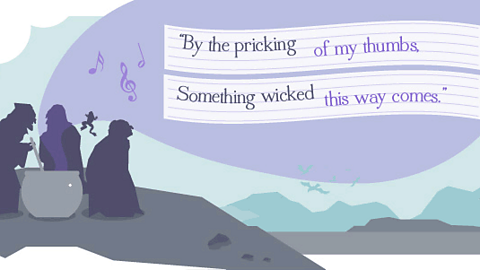Key points
William Shakespeare was an English actor, poet and playwright.
During ShakespeareŌĆÖs lifetime, the theatre became a very popular form of entertainment in London.
Shakespeare wrote tragedies, like Macbeth and Romeo and Juliet, and also comedies, like The Tempest and Twelfth Night.
Acting companies built their own theatres for their performances. In 1599 ShakespeareŌĆÖs company built the Globe Theatre on the south bank of the River Thames in London.
Video about the plays in performance
Watch this video about ShakespeareŌĆÖs plays in performance
Male presenter: All the worldŌĆÖs a stage. Argh! Except for this bit, this is in fact a road, though ironically, up until ShakespeareŌĆÖs time, out on the road was where most stages were found, as bands of actors would tour the country putting on what were intriguingly called Mystery Plays. In fact, they werenŌĆÖt very mysterious, just seriously dull and a bit preachy until, thankfully, the plague came along.
Ken: Hello.
Male presenter: Which was bad news for people like Ken, but great news for the theatre.
Have you really got plague?
Ken: Yeah, donŌĆÖt kiss me.
Male presenter: I wasnŌĆÖt going to.
You see, to help stop the plague spreading, travelling players were banned and the touring theatre was replaced with places like this.
Ah, hang on a minute.
How about this?
You see, the playhouses themselves became hugely popular, with some companies putting on ten different plays in just two weeks, with the actors playing several roles in each one. Must have been confusing.
Female actor: Ah, itŌĆÖs Romeo and Juliet tonight.
Male actor: ItŌĆÖs definitely A Midsummer NightŌĆÖs Dream.
Male presenter: Ah, youŌĆÖre both wrong, itŌĆÖs Hamlet. The original production of Hamlet starred Shakespeare himself, presumably as Hamlet.
William Shakespeare: Uh no, I was the ghost.
Male presenter: Really?
William Shakespeare: Well it was either me or Todd and Todd canŌĆÖt act.
Todd: Whooooo!
Male presenter: Oh.
The playhouses themselves had no backdrops or scenery, although the actors would wear pretty lavish outfits that were befit of nobles and royals, but they werenŌĆÖt allowed to leave the theatre in costume because, if they did, they would be fined.
Oh dear. Luckily, many of them had ingenious trapdoors built into the ceiling and floor. Arghhhhhhhhhhhh!
And up on the roof of the Globe, they even had a cannon, which they fired during battle scenes, to add a real sense of drama.
Especially during a performance of Henry VIII in 1613, when the cannon misfired and burnt the whole theatre down.
Guys, I think IŌĆÖm gonna get down now. Guys? Guys!
But a year later, they rebuilt the theatre, giving that tragedy a happy ending. In fact, back then pretty much all tragedies had a happy ending. Thanks mate, youŌĆÖre really strong.
To make sure the audiences left in a good mood, even the dramatic plays with a sad ending like Romeo and Juliet, would be followed up by a ridiculously upbeat song and dance number. Totally inappropriate!
Five, six, seven, eight!
Did you know?
In 1613 the original Globe Theatre burned down. A spark from a cannon fired during a performance of Henry VIII set fire to the thatched roof.
Acting companies
Acting companies were groups of professional actors who would perform plays together. In medieval times, companies performed theatre versions of Bible stories, which gradually transformed into stories with a strong moralThe lesson of the story, usually encouraging good behaviour..
At first, these acting companies travelled around the country from town to town, carrying their costumes and props in carts. However, in 1576, the first public theatre was built and acting companies began to base themselves in theatres instead of travelling around the country.
The theatre was a very popular form of entertainment in the 1500s and 1600s. However, it was illegal to put a play on inside London, so theatres were built just outside the city.
Why was it illegal to put on a play in London?
Plays were illegal inside the city because the authorities were trying to avoid large gatherings of people that might spread the plague.
There is also evidence that the plague made it more difficult for travelling actors to move between places, as people didnŌĆÖt want strangers bringing illnesses to their town.
The authorities were also opposed to theatres for other reasons. Pickpocketing was common in theatres, and a rowdy audience could descend into fighting. There were also those who believed that watching a play was a lazy pastime, and that people should be at work instead.
The Lord ChamberlainŌĆÖs Men
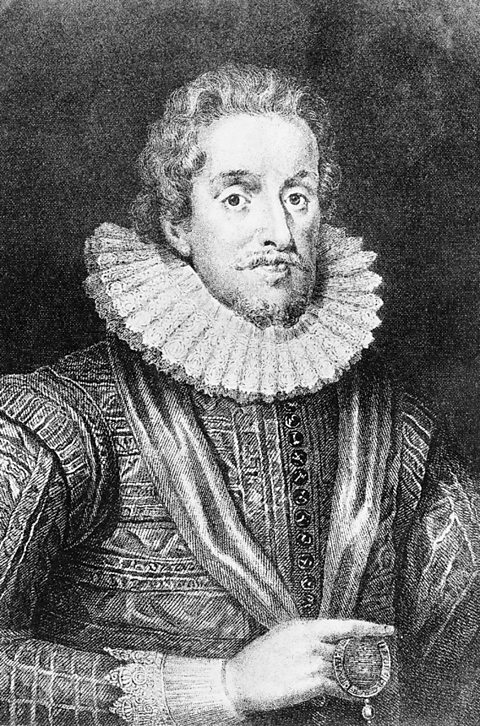
Acting companies were required by law to have a patronA person who gives money to support someone or an organisation.. The patron would grant a license to the actors and sometimes support them financially.
Acting companies were often named after their patron. Shakespeare was part of an acting company called the Lord ChamberlainŌĆÖs Men - their patron was the Lord Chamberlain at the court of Elizabeth I. This meant the company had royal support and were paid to perform at the queenŌĆÖs palace.
The Lord ChamberlainŌĆÖs Men were a very successful acting company. The actors had shares in their company and Shakespeare became wealthy because of their popularity with audiences.

Did you know?
When James I inherited the throne after Elizabeth I died, ShakespeareŌĆÖs company were renamed the KingŌĆÖs Men. James I also enjoyed the theatre and had private performances of plays.
How did Shakespeare please his patron, King James I?
Shakespeare included lots of details in the play Macbeth to please his patron James I. The king was very interested in witches and was also the King of Scotland ŌĆō the supernatural details and Scottish setting would have appealed to him.
Shakespeare as an actor
Shakespeare is believed to have joined the theatre as an actor, but he became better known as a playwrightSomeone who writes plays..
ShakespeareŌĆÖs plays would only be performed by his acting company and the profits were shared among actors and other owners of the company.
Actors often specialised in one type of part. In ShakespeareŌĆÖs acting company, there were several actors who became famous at the time:
Richard Burbage
Burbage was the companyŌĆÖs star actor and a celebrity of the time. He was famous for playing the main tragic roles in Macbeth, Hamlet and Othello.
William Kempe
Kempe often played the comedy roles, such as the character Bottom in A Midsummer NightŌĆÖs Dream. He was also famous for his on-stage jigA type of dance..
Actors were not given a copy of the whole play. Instead, they would be given their ŌĆśpartsŌĆÖ ŌĆō a sheet with only their lines and directions. During the performance, a list of scenes with the exits and entrances was posted behind the stage for the actors to check.
Why were actors only given their lines and not a copy of the whole play?
Some people believe this was because the company didnŌĆÖt want a copy of the whole play to fall into the wrong hands. Acting companies were competing for audiences and they didnŌĆÖt want a different company stealing their ideas.
The Globe Theatre
Many of the theatres in ShakespeareŌĆÖs day were open-air. The most famous stage was at the Globe Theatre, which was built by ShakespeareŌĆÖs theatre company, the Lord ChamberlainŌĆÖs Men, in 1599. Shakespeare was one of six original shareholders and owned 12.5% of the theatre.
The Globe Theatre was shaped like a doughnut. The stage and the seats round the edge were sheltered, but the main middle section, called the yard or the pit, was open to the sky.
There was no artificial light in the open-air theatres, so plays were performed during daylight hours.
The Heavens
The roof above the stage was called the Heavens and was painted to look like a starry night.
The Gallery
People watching the play from the first or second floor were in the galleries. The gallery balcony directly above the stage could be used as part of the action to show castle battlements or an upper window. Musicians may also have played from this gallery.
The Tiring House
The area behind the stage, where the actors prepared by changing their costumes and collecting props. The actors would have entered the stage through a curtain from the tiring house.
Did you know?
The GlobeŌĆÖs name was symbolic ŌĆō it meant that the theatre represented the whole world. Shakespeare himself wrote:ŌĆ£All the worldŌĆÖs a stage/ And all the men and women merely players.ŌĆØ
Sounds and special effects
The stages didnŌĆÖt have scenery, but there is evidence they used sound and special effects during the plays.
Musicians
Music was an important part of the theatre, and an audience would expect to hear musicians playing live music. There is evidence of music in many of ShakespeareŌĆÖs plays, including the song ŌĆśSigh no more, ladiesŌĆÖ from Much Ado About Nothing. After the play was finished, there would often be music and a dance on stage.
Trap door
There was a space underneath the stage, accessed from the stage by a trap door. Actors could appear and disappear suddenly from the trap door. This space would often represent hell and actors would often hide here to make ghostly noises, for example when the ghost speaks in Hamlet. The trap door could also act as a grave, with a character lowered into the space below.

Sound effects
To make the noise of thunder, drums could be played off stage or a cannon ball could be rolled across the floor of the Heavens.
Other special effects
Many of the plays had violent scenes that needed special effects to show the gory details. Actors would fill animal bladders with animal blood to use in a scene. If there was a particularly gory part they might also use pigsŌĆÖ intestines to throw across the stage.
How did ShakespeareŌĆÖs plays show severedCut off. heads on stage?
There are frequent beheadings and severed arms, legs and heads in ShakespeareŌĆÖs plays. ItŌĆÖs likely that these gruesome details were included to please the audience. Public executions were very common at the time, so many of the audience would be familiar with violence. Most of the severed heads on stage were made of wax, with a pigŌĆÖs bladder full of blood added inside.
Costumes
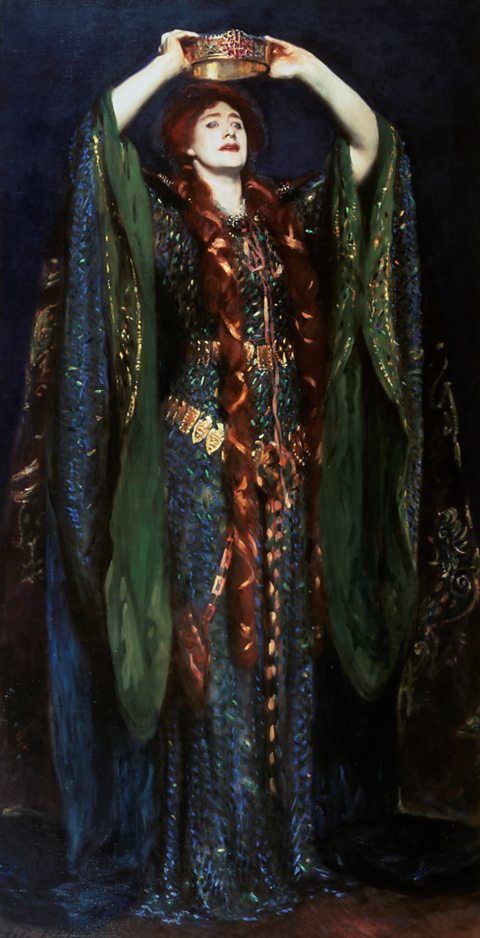
Costumes were an important part of the theatre in ShakespeareŌĆÖs day and were the most expensive part of a performance. There is evidence that the acting companies invested a lot of money in the clothes the actors wore on stage.
The costumes worn by the actors would show the audience the status of their character. Expensive materials would signal that a character was of a high status. The female characters were played by young men, so the actors would also need to wear wigs and make up.
Props were also an important part of a play. When the actors carried candles, it was a signal to the audience that it was night-time. The actors might also use small props like daggers, swords, crowns and flowers. Larger props like thrones and benches would often remain on stage for the whole play.
The tradition of using elaborateDeveloped in great detail. costumes continued into the 1800s. In the late 1880s, the actress Ellen Terry played Lady Macbeth and wore a green gown made from the shimmering wings of 1,000 beetles.

Test your knowledge
Play Bitesize secondary games. gamePlay Bitesize secondary games
Have fun playing science, maths, history, geography and language games.

More on About Shakespeare
Find out more by working through a topic
- count1 of 5
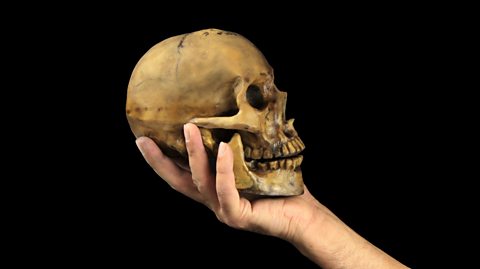
- count2 of 5
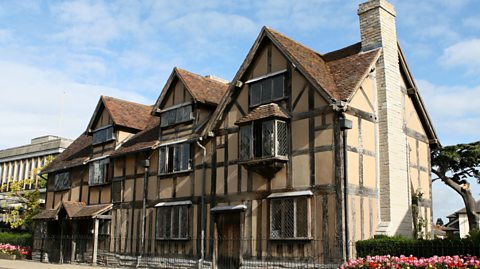
- count4 of 5
